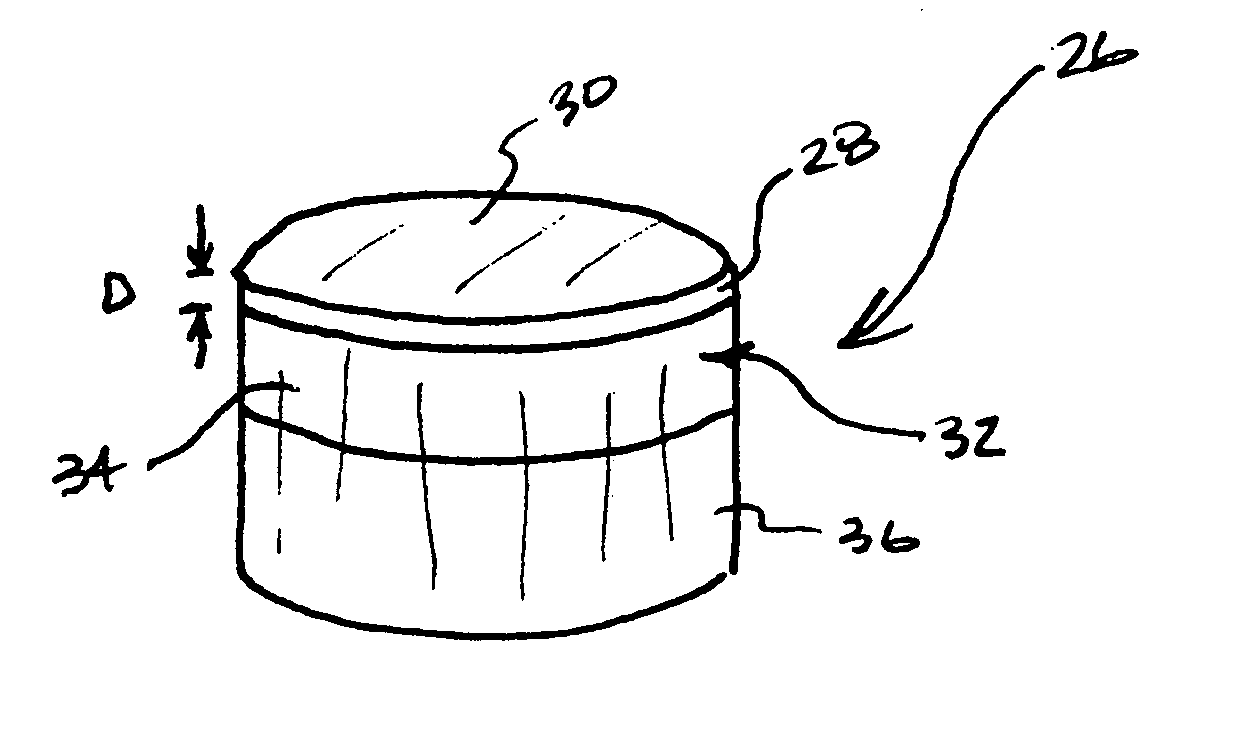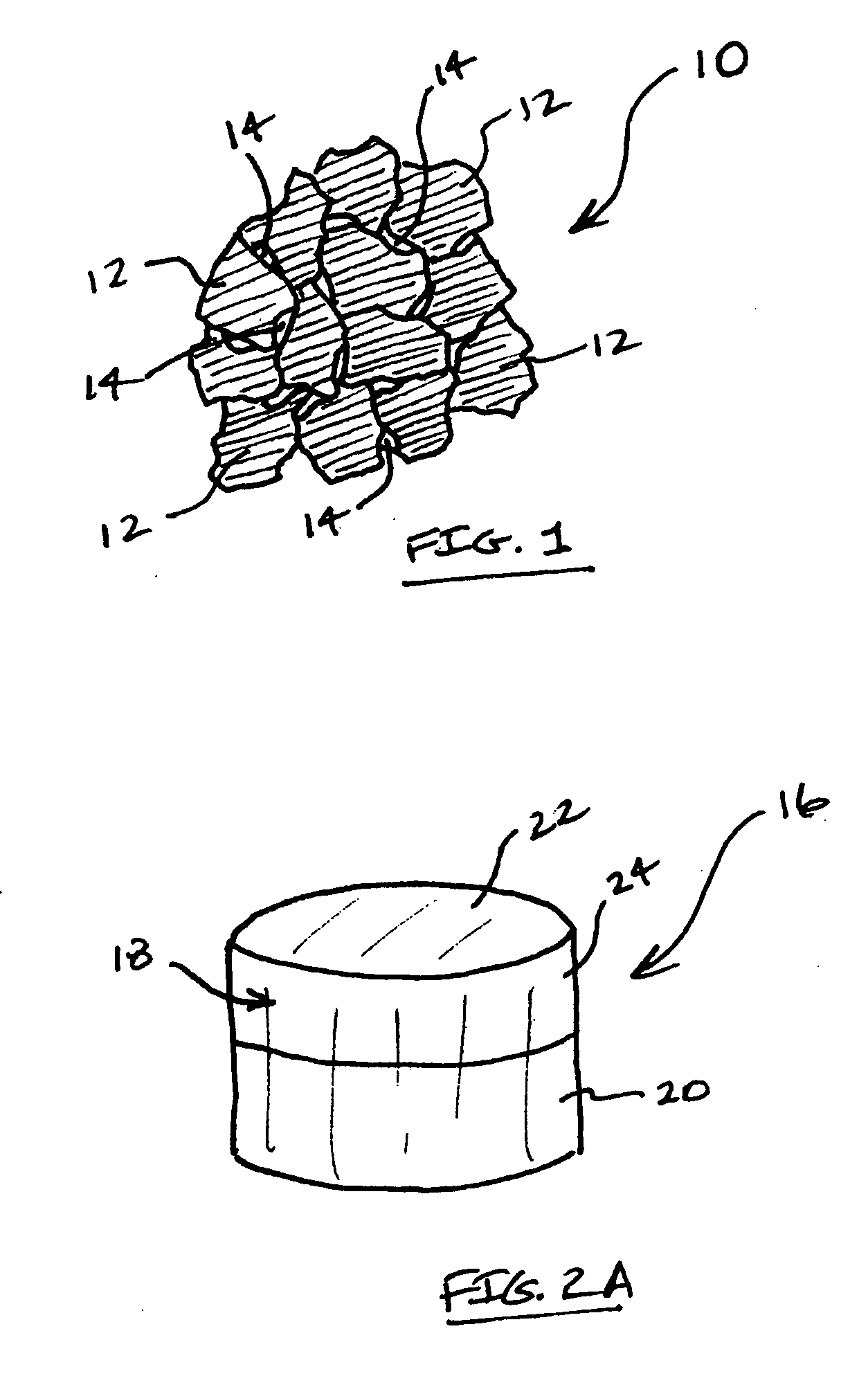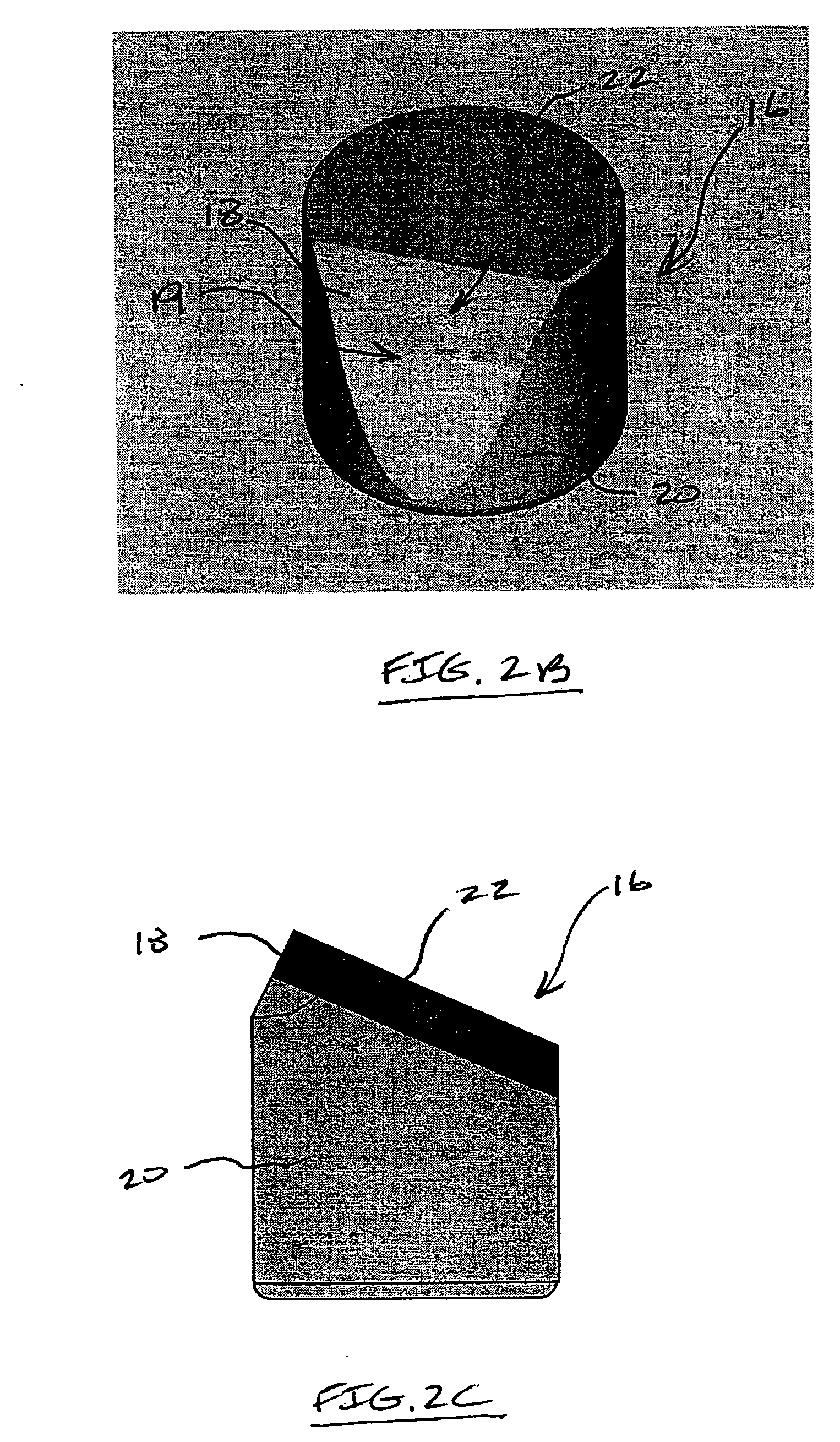Thermally stable diamond polycrystalline diamond constructions
- Summary
- Abstract
- Description
- Claims
- Application Information
AI Technical Summary
Benefits of technology
Problems solved by technology
Method used
Image
Examples
example 1
TSPCD Construction
[0070] Synthetic diamond powder having an average grain size of approximately 20 micrometers was mixed together for a period of approximately 1 hour by conventional process. The resulting mixture included approximately six percent by volume cobalt solvent metal catalyst, and WC—Co based on the total volume of the mixture, and was cleaned. The mixture was loaded into a refractory metal container with a cemented tungsten carbide substrate and the container was surrounded by pressed salt (NaCl) and this arrangement was placed within a graphite heating element. This graphite heating element containing the pressed salt and the diamond powder / substrate encapsulated in the refractory container was then loaded in a vessel made of a high-temperature / high-pressure self-sealing powdered ceramic material formed by cold pressing into a suitable shape. The self-sealing powdered ceramic vessel was placed in a hydraulic press having one or more rams that press anvils into a centr...
example 2
TSPCD Construction
[0076] A TSPCD construction of this invention was prepared according to the process described above for example 1 except that the treatment for providing a thermally stable region in the PCD body was conducted for longer period of time. Specifically, the PCD compact was immersed on the leaching agent for a period of approximately 300 minutes. After the designated treatment time had passed, the PCD compact and fixture assembly was removed from the leaching agent and PCD compact was removed from the protective fixture. The resulting TSPCD construction formed according to this example had a thermally stable region that extended from the working surfaces a distance into the diamond body of approximately 0.075 mm.
[0077] A feature of TSPCD constructions of this invention is that they include a defined thermally stable region within a PCD body that provides an improved degree of wear and abrasion resistance, when compared to conventional PCD, while at the same time prov...
PUM
| Property | Measurement | Unit |
|---|---|---|
| Grain size | aaaaa | aaaaa |
| Length | aaaaa | aaaaa |
| Length | aaaaa | aaaaa |
Abstract
Description
Claims
Application Information
 Login to View More
Login to View More - R&D
- Intellectual Property
- Life Sciences
- Materials
- Tech Scout
- Unparalleled Data Quality
- Higher Quality Content
- 60% Fewer Hallucinations
Browse by: Latest US Patents, China's latest patents, Technical Efficacy Thesaurus, Application Domain, Technology Topic, Popular Technical Reports.
© 2025 PatSnap. All rights reserved.Legal|Privacy policy|Modern Slavery Act Transparency Statement|Sitemap|About US| Contact US: help@patsnap.com



